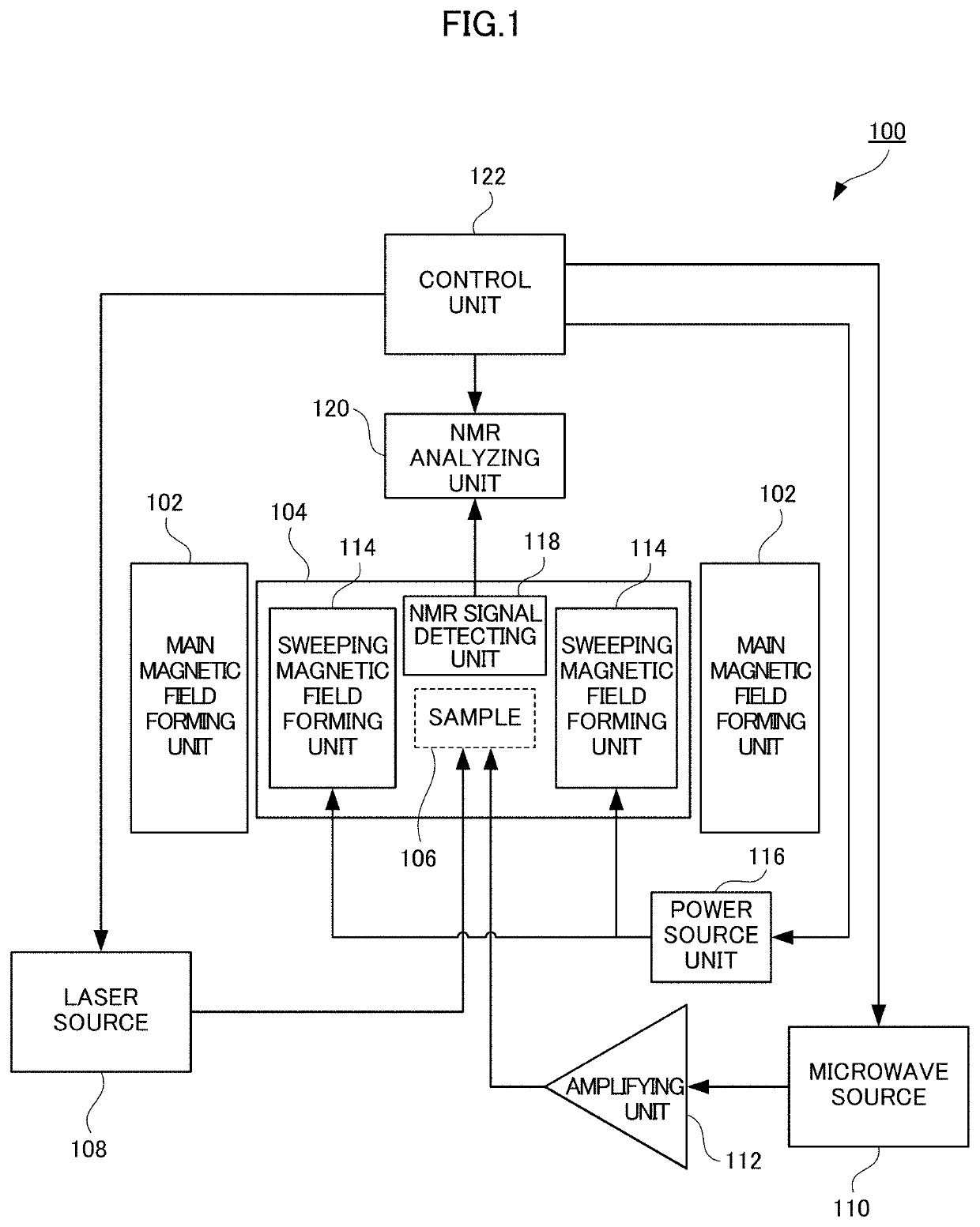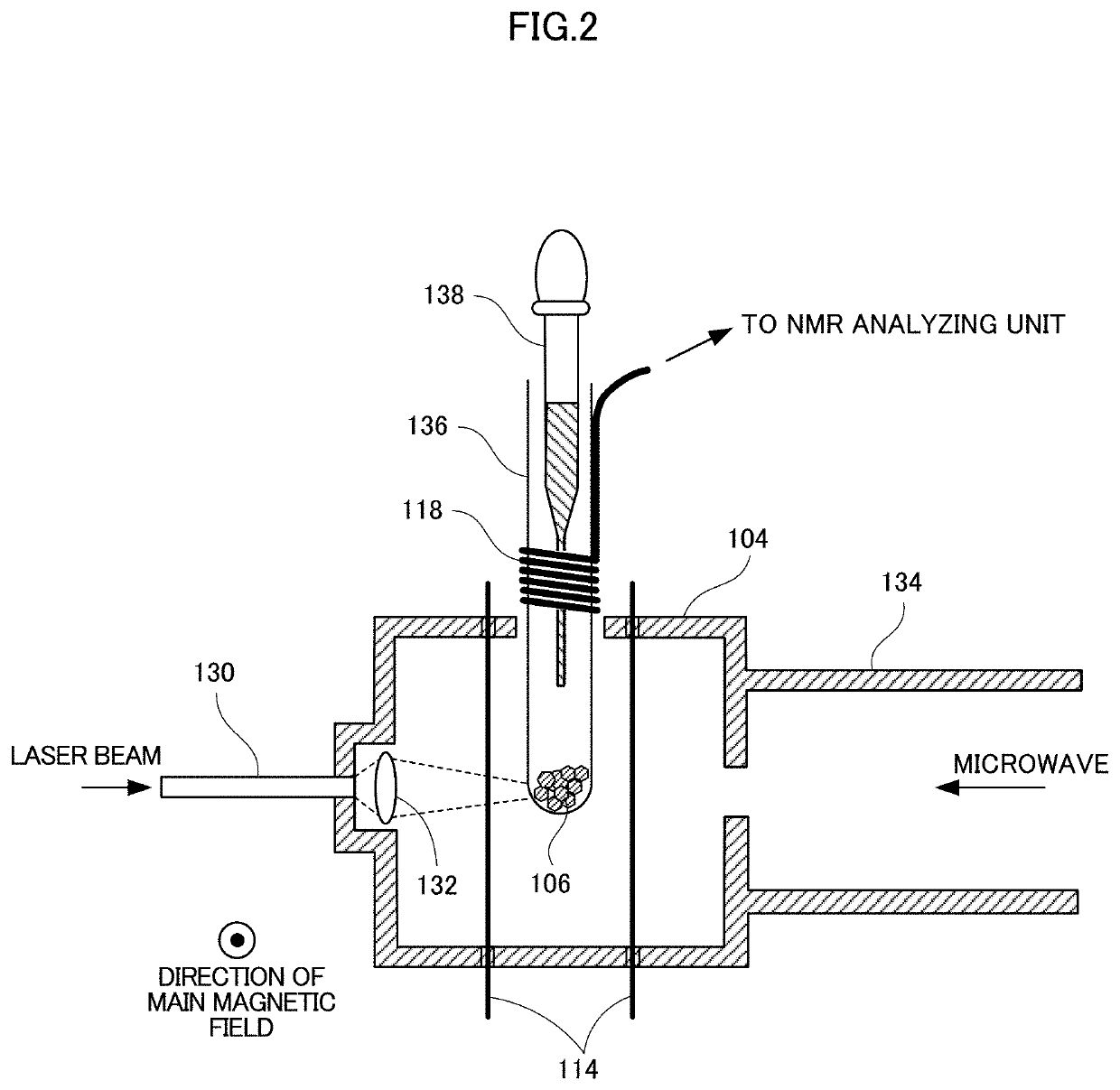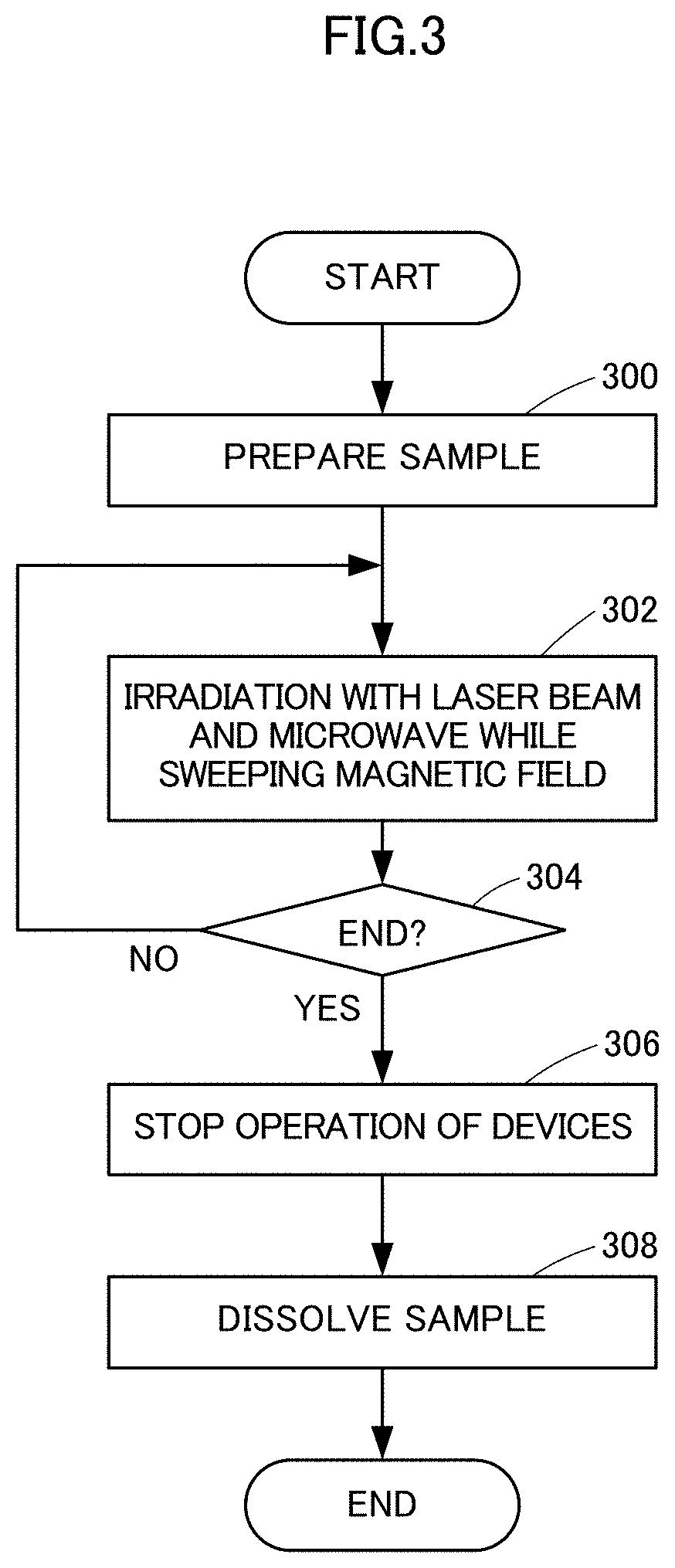Nuclear spin hyperpolarization method and apparatus
a nuclear spin and hyperpolarization technology, applied in the field of nuclear spin hyperpolarization methods and apparatuses, can solve the problems of affecting the application of triplet dnp to chemical analysis or medical analysis, requiring a large and expensive apparatus, and unable to theoretically exceed 660 times the polarization at room temperature, so as to achieve high polarization and high sensitivity
- Summary
- Abstract
- Description
- Claims
- Application Information
AI Technical Summary
Benefits of technology
Problems solved by technology
Method used
Image
Examples
first embodiment
[0064]Referring to FIG. 1, a nuclear spin hyperpolarization apparatus 100 in accordance with an embodiment of the present invention includes: a main magnetic field forming unit 102; a cavity 104 arranged between magnetic poles of main magnetic field forming unit 102; a laser source 108 generating a laser beam to irradiate a sample 106 placed in cavity 104; a microwave source 110 generating a microwave to irradiate sample 106; and an amplifying unit 112 amplifying the microwave from microwave source 110. Nuclear spin hyperpolarization apparatus 100 further includes: a sweeping magnetic field forming unit 114 arranged in cavity 104; a power source unit 116 supplying electric current to sweeping magnetic field forming unit 114; an NMR signal detecting unit 118 for detecting an NMR signal; an NMR analyzing unit 120 analyzing NMR signals detected by NMR signal detecting unit 118; and a control unit 122 for controlling these units.
[0065]FIG. 2 shows specific exemplary structures of cavity...
example 1
[0101]In the following, results of experiments will be described to show effectiveness of the present invention. Experiments were conducted using the structure shown in FIG. 1.
[0102]Using a flash-lamp-excited dye laser as laser source 108, samples were irradiated with the laser beam having pulse width of 1 micro-second (T1 in FIG. 5 represents 1 μs), wavelength of 590 nm, repetition frequency of 50 Hz (T3 in FIG. 5 represents 20 ms) and optical output of 10 mJ. An electromagnet forming a static magnetic field of 0.4T was used as main magnetic field forming unit 102. A microwave source outputting microwaves of 12 GHz was used as microwave source 110. Continuous waves of 12 GHz output from microwave source 110 were pulsated by a switch to generate pulses of 10 micro seconds (T2 in FIG. 5 represents 10 μs), amplified to peak power of about 10W by a TWT amplifier, and input to cavity 104. Cavity 104 used had resonance frequency of 12 GHz at TE 102 mode. The cavity and the waveguide were...
example 2
[0108]FIG. 8 shows results of experiments conducted by the apparatuses of the same structure as Example 1 and using powder samples prepared by mixing deuterated benzoic acid (every H was replaced by deuterium D), salicylic acid and pentacene at 1:1:0.04 (mole ratio). The ordinate of FIG. 8 indicates polarization of hydrogen nuclear spins (1H). Since the deuterated benzoic acid used did not have hydrogen nuclear spins (1H), the polarization of FIG. 8 indicates polarization of hydrogen nuclear spins (1H) of salicylic acid. The attained hydrogen nuclear spin polarization was 0.8%, and thus, polarization comparable to that of benzoic acid simple body could be attained even by mixed partner molecule (salicylic acid).
PUM
 Login to View More
Login to View More Abstract
Description
Claims
Application Information
 Login to View More
Login to View More - R&D
- Intellectual Property
- Life Sciences
- Materials
- Tech Scout
- Unparalleled Data Quality
- Higher Quality Content
- 60% Fewer Hallucinations
Browse by: Latest US Patents, China's latest patents, Technical Efficacy Thesaurus, Application Domain, Technology Topic, Popular Technical Reports.
© 2025 PatSnap. All rights reserved.Legal|Privacy policy|Modern Slavery Act Transparency Statement|Sitemap|About US| Contact US: help@patsnap.com



